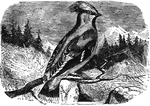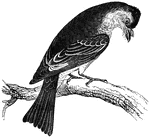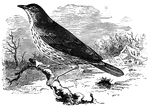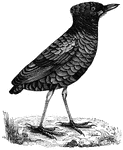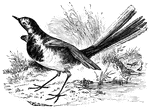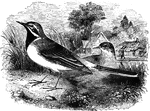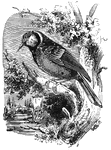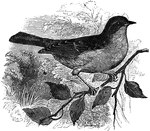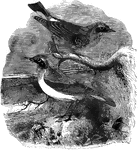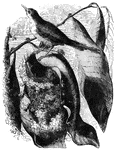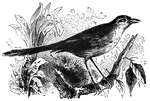
Falconelle
Native to Australia, the falconelle is approximately the size of a sparrow, and resembles the great…
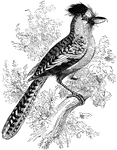
Batara
Taking its name from the Azara people of South America, the batara is the largest of the shrikes.

Magpie Shrike
Found in Guiana and Brazil, this shrike draws its name from its resemblence to the magpie.
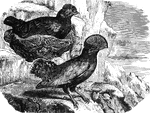
Cock-of-the-Rock
Approximately the size of pigeon, the cock of the rock has a distinctive crest of feathers arranged…
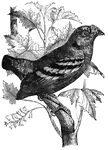
Green Calyptomena
Found in Java and Sumatra, the green calyptomena's namesake plumage helps it blend in with foliage.
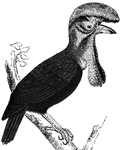
Umbrellabird
Feeding primarily on fruits, the umbrella-bird has two dstinctive crests of feathers, one rising from…

Bloody Pavao
The bloody pavao (coracina scutata) is a mostly black bird, which gets its name from the blood…
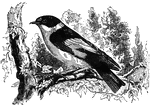
Collared Flycatcher
The collared fly-catcher, a bird which feeds on insects and the occaisional small vertebrate.
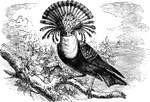
King Flycatcher
An impressive South American species of fly-catcher, with a transverse crest of reddish-fawn feathers.

Savannah Flycatcher
Found in the southern United States, the Savannah fly-catcher is notable for its long, forked tail.
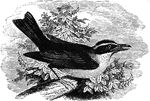
Spoonbill Tyrant Flycatcher
The spoon-bill tyrant fly-catcher has a large, thick bill, which it uses for feeding on butterflies.
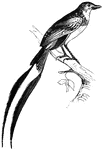
Tricolored Alectrurus
Native to South America, the tricolored alectrurus measures only six inches in length.

Blackbird
Black with a yellow bill, the blackbird feeds mostly on larvae, snails, worms, insects, and fruits.

Red-Wing Thrush
The red-wing thrush migrates from the north to the south of Europe in the winter, feeding on worms and…
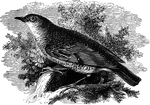
Golden Thrush
Also known as White's thrush, the golden thrush is native to Japan and Savabut migrates to Southern…
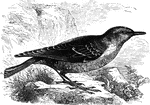
Rock Thrush
Inhabiting the higher reaches of Southern Europe, the rock thrush descends to lower altitudes during…
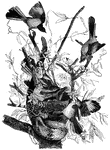
Mockingbirds Attacking a Rattlesnake
A flock of mocking-birds attacking a rattlesnake in a tree, which was threatening a nest.
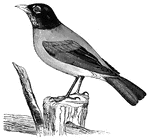
American Robin
The American Robin (known as the migratory thrush among naturalists) feeds on small insects and various…
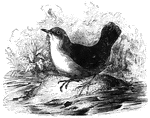
Black Dipper
The black dipper, also known as the European water-ousel, feeds on small shellfish and insects.

Meadow Pipit
Also known as the titlark, the meadow pipit prefers to live on steep and arid slops, subsisting on a…
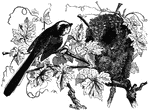
Long-Tailed Titmouse
The most noted of the titmice, the long-tailed titmouse is about five and a half inches in length, half…

Blue Tit
Commonly found throughout Europe, the blue titmouse is known for destroying the buds of flowers, and…
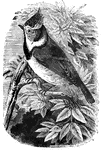
Crested Tit
The crested tit prefers the colder climes of Northern Europe, being common in Denmark, Sweden, Russia,…

Black-Lored Tit
Native to the Himalaya Mountains, P. xanthogenys is somewhat smaller than the great tit.

European Robin Redbreast
Found in the temperate regions of Europe, the robin redbreast can often be found around homes.
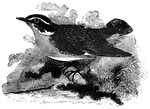
Whinchat
The whinchat is a migratory European bird, which subsists on a diet of worms, insects, small shell-mollusks,…

Black Redstart
A black redstart perched on a branch in front of a stone building. It greatly resembles the redstart.
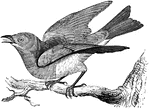
Bluebird
The bluebird feeds on a diet of insects and spiders in the summer and berries in the winter. It usually…
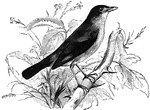
Nightingale
The nightingale is renowned for its song. Its name is derrived from the Saxon meaning night-singer.
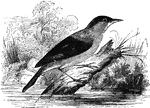
Reed Warbler
Nesting in the reeds near bodies of freshwater, the reed-warbler can be found in Middle and Southern…

Golden-Crested Regulus
Also known as the kinglet, the golden-crested regulus is found throughout Europe and is noted for its…
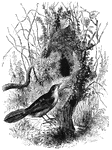
Pinc-Pinc
Found in South Africa, the pinc-pinc is about the size of a wren, and is named after its distinctive…
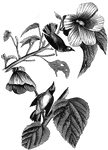
Blue-Winged Yellow Warbler
Found from Louisiana to New Jersey, the blue-winged yellow warbler migrates south to tropical parts…

Widowbird
The widowbird, also known as the whidahfinch. Although most specimens are about the size of a canary,…

Nests of the genus Euplectes
Woven of grass, the nests of the genus Euplectes have an opening which faces down towards the water.…

Nests of the Bengal weaver-bird
Nests of the Bengal weaver-bird, which adds a new one to the bottom of the previous season's every year.

Green Grosbeak
Also known as the green finch, the green grosbeak frequents gardens, orchards, small woods, and cultivated…

Hawfinch
Feeding on pollen-stalks, laurel-berries, and the like, the haw-finch is also known as the common grosbeak…
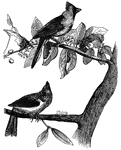
Cardinal Grosbeak
Noted for its beautiful song, the cardinal grosbeak is sometimes known as the virgin nightingale.
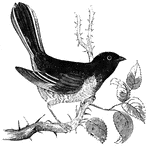
Chewink
Also known as the ground-robin or ground-finch, the chewink lives in thickets along the borders of woods.
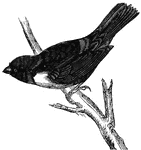
Scarlet Tanager
The scarlet tanager (also known as the black-winged summer redbird, or fire bird) feeds on insects,…

Common Sparrow of Europe
Often found among human settlement, the common sparrow of Europe's diet consists of seeds, insects,…

